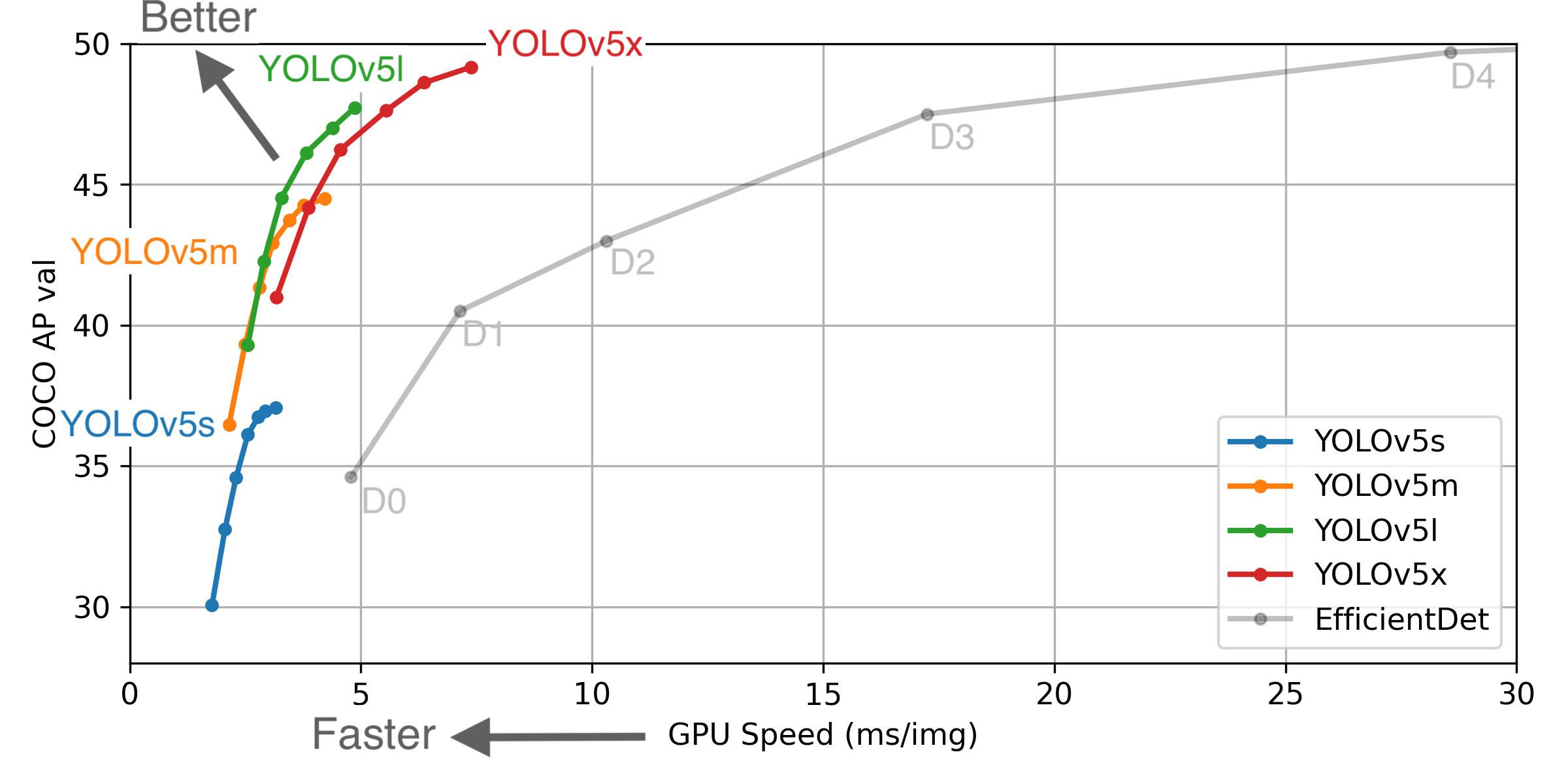-
-
Notifications
You must be signed in to change notification settings - Fork 3.4k
New issue
Have a question about this project? Sign up for a free GitHub account to open an issue and contact its maintainers and the community.
By clicking “Sign up for GitHub”, you agree to our terms of service and privacy statement. We’ll occasionally send you account related emails.
Already on GitHub? Sign in to your account
WARNING: non-finite loss, ending training tensor([nan, nan, 0., nan], device='cuda:0') #1539
Comments
|
Ultralytics has open-sourced YOLOv5 at https://github.com/ultralytics/yolov5, featuring faster, lighter and more accurate object detection. YOLOv5 is recommended for all new projects. 
** GPU Speed measures end-to-end time per image averaged over 5000 COCO val2017 images using a V100 GPU with batch size 32, and includes image preprocessing, PyTorch FP16 inference, postprocessing and NMS. EfficientDet data from [google/automl](https://github.com/google/automl) at batch size 8.
Pretrained Checkpoints
** APtest denotes COCO test-dev2017 server results, all other AP results in the table denote val2017 accuracy. For more information and to get started with YOLOv5 please visit https://github.com/ultralytics/yolov5. Thank you! |
|
I also encountered the same problem as you, how did you solve it in the end? Thank you!! |
I set the Hyperparameters giou=1 in |
|
@zxin8218 setting the giou hyperparameter to 1.0 in the |

❔Question
I change the network slightly and cannot use the pre-trained? How can I start training a model from scratch?
I use --weights '', but after train 2 epochs, I meet the wrong: WARNING: non-finite loss, ending training tensor([nan, nan, 0., nan], device='cuda:0')
What can i do? thank you for your reply!
Additional context
WARNING: non-finite loss, ending training tensor([nan, nan, 0., nan], device='cuda:0')
The text was updated successfully, but these errors were encountered: